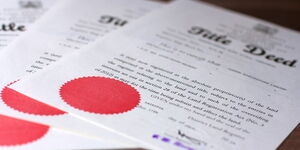Every time we look up in the sky and a plane is flying past, you will realise it is mostly white in colour.
However, have you ever wondered why almost all planes are painted white in colour and consistently so?
Well, Kenyans.co.ke sought to find out why;
- Helps in Reflecting the Light
Unlike most colours, especially black, the white colour essentially reflects sunlight instead of absorbing it. This is great for keeping the plane’s interior temperature down.
“It’s the same as getting into a white car on a sunny day, its inside would probably be cooler than a black car would be.
Aeroplanes are very exposed to sunlight both when they are flying and when they are parked on the ground. White paint is the best way to minimize cabin heating and prevent potential damage from solar radiation.
- White Paint Hardly Shows Signs of Fading
A plane’s body goes through a lot on every flight due to being highly exposed to varying atmosphere conditions, whether that be thunderstorms, heavy rain, snow, and more.
Coloured aircraft tend to fade over time, and thus require repainting to maintain their aesthetic appeal.
All paints will eventually fade, but white will fade the least slowly compared to other colours, the more reason why planes are painted white to maintain their aesthetic appeal for longer.
- To Reduce Bird Strikes
Although it may not be obvious at first glance, the white colour of an aeroplane has been shown to reduce the risk of bird strikes.
The impact of birds in flight is a significant and common threat to the safety of aircrafts.
White exteriors can enhance aircraft visibility and potentially increase its detection and avoidance by birds.
Darker aircraft colour schemes, on the other hand, could possibly reduce the contrast between aircraft and the visual background.
In turn, this may reduce the ability of birds to detect aircraft in sufficient time to avoid a collision.
- Easier to Detect Damages
It is easier to spot details such as an oil spillage on a white surface.
Defects such as corrosion and rust spots, scratches, dents and fuel leaks can easily be identified on white paint.
This, in the long run, assists to avert damages and costly repairs even in a plane crash.
- To Reduce Weight
White paint weighs less than other colours due to the way it is formulated.
The use of other colours, especially black, means additional weight. This is because it contains more “pigments” in it.
According to an aviation study, the paint adds to an aeroplane between by 273 and 544 kilograms.
It is important to note that each airline has its own unique touches on livery, including fuselage colour, and the whole design as well as typographical identifiers.
Equally, not all plane colours are pure white.
This could be down to advertising. After the white base, airlines would often paint their brand name on the side and their colours on the tail of the plane.












